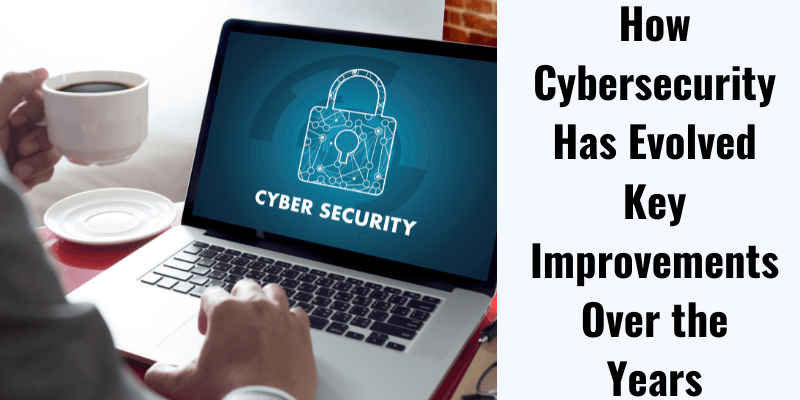Discover how cybersecurity has evolved with advanced threat detection, encryption, cloud security, and more. Learn about the key improvements protecting businesses and individuals from cyber threats.
Table of Contents
What is Cybersecurity?
Cybersecurity refers to the practice of protecting systems, networks, and data from digital attacks, unauthorized access, and damage. It involves a range of technologies, processes, and practices designed to safeguard computers, servers, mobile devices, electronic systems, and sensitive information from cyber threats. These threats can include hacking, malware, phishing, ransomware, and other forms of cybercrime.
Effective cybersecurity measures aim to ensure the confidentiality, integrity, and availability of data, while also protecting privacy and preventing disruptions to digital operations. As more of our lives move online, strong cybersecurity is essential for both individuals and organizations to defend against evolving risks.
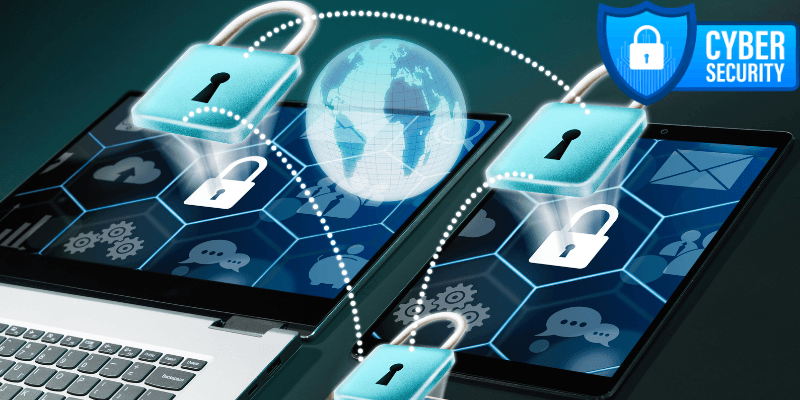
10 types of cybersecurity:
- Network Security
Focuses on protecting the integrity, confidentiality, and accessibility of data as it travels across networks. This includes firewalls, intrusion detection systems (IDS), and VPNs to prevent unauthorized access. - Information Security
Aims to protect sensitive information, whether in storage, transit, or use. It covers policies and technologies to safeguard data from unauthorized access and breaches. - Application Security
Ensures that software and apps are secure from vulnerabilities and cyberattacks by using coding practices, firewalls, and regular testing to identify and fix security flaws. - Cloud Security
Designed to protect data and services in cloud environments from threats. This includes encryption, access control, and regulatory compliance to keep data safe in cloud platforms. - Endpoint Security
Protects individual devices like computers, smartphones, and tablets from malware and other security threats. This involves antivirus software, device encryption, and patch management. - Identity and Access Management (IAM)
Focuses on ensuring that only authorized individuals have access to systems and data. This includes multifactor authentication (MFA), user access policies, and identity verification tools. - Mobile Security
Involves protecting mobile devices, including smartphones and tablets, from cyber threats like malware, phishing, and data theft. It includes securing apps, networks, and data stored on devices. - Data Security
Focuses on protecting data from unauthorized access, breaches, or theft by implementing encryption, backup solutions, and data masking techniques. - Disaster Recovery and Business Continuity
Ensures that organizations can continue operations after a cyberattack or disaster. It involves backup strategies, disaster recovery plans, and maintaining data availability. - Operational Security (OPSEC)
Protects processes and critical operations by identifying potential vulnerabilities and implementing controls to reduce risks. This includes monitoring communications and system behavior to detect potential threats.
These cybersecurity types work together to create a multi-layered defense against various cyber threats.
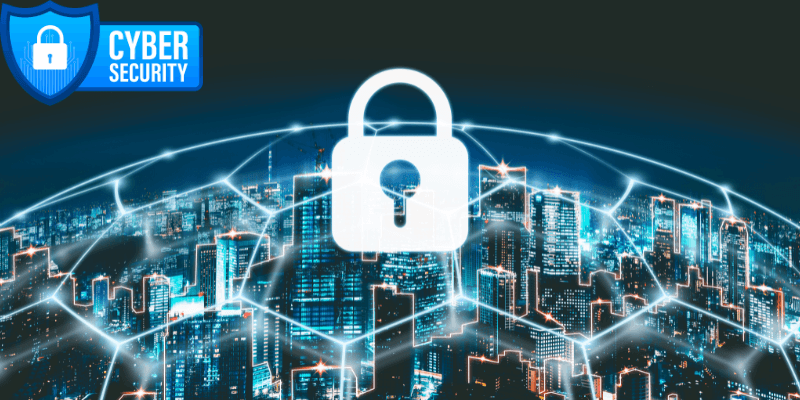
How Cybersecurity has improved over the years
Cybersecurity has significantly evolved over the years in response to increasing threats and technological advancements. Here’s how it has improved:
1. Advanced Threat Detection and Prevention
Earlier, cybersecurity focused mainly on reactive measures, like antivirus software. Now, with the advent of artificial intelligence (AI) and machine learning (ML), cybersecurity has become more proactive. Modern systems can detect unusual patterns in real time and respond before attacks occur. Tools like intrusion detection systems (IDS) and threat intelligence platforms provide insights into potential risks.
2. Encryption and Data Protection
Encryption technology has become more sophisticated. Early encryption methods were basic, but today, advanced encryption standards (AES) and public key infrastructure (PKI) provide robust protection for data both in transit and at rest. This ensures sensitive information, such as financial data and personal records, is well-secured from cybercriminals.
3. Cloud Security
With the rise of cloud computing, securing data in cloud environments has been a major focus. Early cloud solutions lacked comprehensive security features, but now, specialized cloud security platforms and zero-trust architectures protect cloud-based systems, enabling businesses to safely store and process data in the cloud.
4. Multifactor Authentication (MFA)
Passwords alone were once the standard method of authentication. Today, multifactor authentication (MFA) is a critical improvement, requiring multiple verification methods like biometrics, one-time passwords (OTP), and device authentication. This reduces the chances of unauthorized access significantly.
5. Endpoint Security Solutions
Cybersecurity now includes more robust endpoint security for devices such as computers, smartphones, and tablets. Early solutions were limited to antivirus programs, but today, endpoint detection and response (EDR) tools monitor, detect, and respond to threats on devices in real time, making it harder for attackers to exploit individual devices.
6. Regulations and Compliance
Over the years, governments and industries have introduced stringent regulations and standards to protect consumer data, such as GDPR, HIPAA, and PCI DSS. These frameworks force organizations to adhere to strict cybersecurity protocols, improving overall security practices globally.
7. Automated Security Tools
Automation in cybersecurity has drastically reduced human error and improved efficiency. Security orchestration, automation, and response (SOAR) platforms automate routine security tasks like incident detection, response, and threat hunting. This helps businesses respond faster to threats.
8. Behavioral Analytics
Early cybersecurity methods focused on known attack patterns. Modern security incorporates behavioral analytics, which tracks and analyzes user behavior to detect anomalies that might indicate insider threats or sophisticated attacks. This proactive approach has made threat detection more comprehensive.
9. Cybersecurity Awareness Training
Organizations now invest in cybersecurity training for employees, helping them recognize phishing scams, malware, and social engineering attacks. This human element has become a crucial layer of security, reducing the likelihood of breaches caused by user error.
10. Zero Trust Architecture
Traditionally, cybersecurity relied on securing the perimeter (network boundaries). Today, the Zero Trust model assumes that threats can exist both inside and outside the network, requiring continuous verification of user identities and devices, minimizing the risk of insider attacks or breaches.
11. Improved Incident Response and Recovery
In the past, responding to cyber incidents could take days or weeks, often resulting in significant damage. Today, incident response plans are more sophisticated and faster, thanks to automation, real-time monitoring, and cloud backups, enabling organizations to recover from attacks quickly with minimal downtime.
12. Collaboration and Threat Intelligence Sharing
Organizations now benefit from cybersecurity collaboration platforms that share real-time threat intelligence across industries. This collective effort helps in identifying and mitigating new threats faster, strengthening overall defenses against global cyber threats.
In summary, cybersecurity has improved by adopting advanced technologies, regulatory frameworks, and proactive defense strategies, making it more resilient and adaptive to the growing complexity of cyber threats.
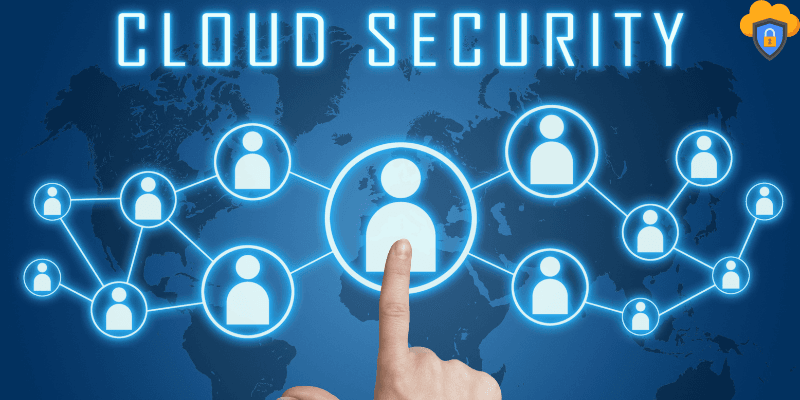
How to develop Cybersecurity
Developing cybersecurity involves a strategic combination of technologies, processes, and best practices to protect digital assets from cyber threats. Here’s a step-by-step guide to developing robust cybersecurity:
1. Assess Risks and Identify Threats
Begin by conducting a thorough risk assessment. Identify potential threats like hackers, malware, phishing attacks, insider threats, and data breaches. Understand which assets (data, systems, networks) are most vulnerable.
2. Establish Security Policies
Create clear security policies that outline rules for accessing systems and handling data. These policies should cover password management, software updates, data encryption, remote access, and incident response plans.
3. Implement Network Security
Use firewalls, Intrusion Detection/Prevention Systems (IDS/IPS), and network segmentation to secure your network from unauthorized access. Regularly monitor network traffic to detect suspicious activities.
4. Use Strong Access Controls
Adopt identity and access management (IAM) practices. Implement multifactor authentication (MFA) and role-based access control (RBAC) to limit user access based on job requirements.
5. Secure Data
Encrypt sensitive data both at rest and in transit. Regularly back up critical data and store backups in a secure, off-site location. Implement data loss prevention (DLP) tools to prevent unauthorized sharing or leaks.
6. Develop Application Security
Integrate security into your software development process through secure coding practices, vulnerability testing, and patching. Ensure applications are updated regularly to address newly discovered vulnerabilities.
7. Implement Endpoint Security
Secure all devices that connect to the network, such as computers, smartphones, and tablets. Use antivirus, anti-malware, and encryption tools to safeguard devices from threats.
8. Educate Employees
Train employees on cybersecurity best practices, such as identifying phishing emails, using strong passwords, and following data protection policies. Create a culture of cybersecurity awareness within your organization.
9. Monitor Systems Continuously
Set up continuous monitoring of systems and networks to detect and respond to unusual activity in real time. Use security information and event management (SIEM) tools to collect and analyze data for potential threats.
10. Create an Incident Response Plan
Develop a clear incident response plan (IRP) outlining how to respond to cyberattacks or breaches. Assign roles, establish communication protocols, and ensure your team is prepared to act quickly to minimize damage.
11. Ensure Compliance with Regulations
Align your cybersecurity strategies with industry regulations such as GDPR, HIPAA, or PCI DSS to ensure compliance. Regular audits and compliance checks can help avoid penalties and enhance security.
12. Review and Improve Continuously
Cybersecurity is not a one-time effort. Regularly review and update your security measures based on new threats, vulnerabilities, and changes in your business. Conduct periodic penetration testing and vulnerability assessments.
By following these steps, you can develop a cybersecurity framework that protects your organization from evolving cyber threats. Continuous improvement and vigilance are key to maintaining a secure environment.
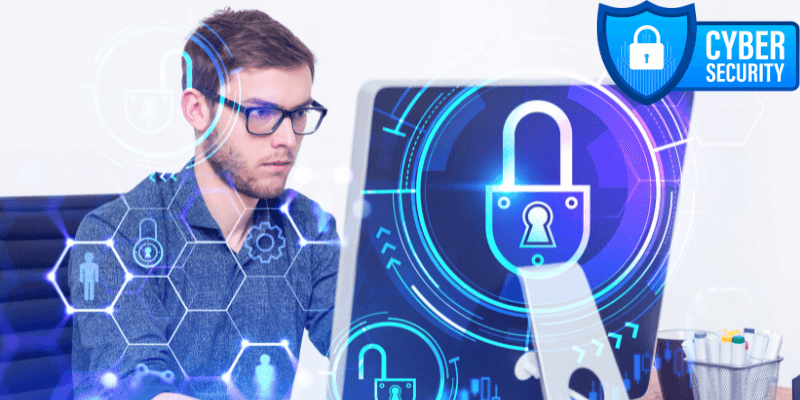
Conclusion
Stay Protected with Top Antivirus Solutions
As cyber threats continue to evolve, having robust cybersecurity measures is essential for protecting your digital life. Three of the top antivirus solutions you can rely on for strong defense are Bitdefender, F-Secure, and Sophos Home. Each offers unique features that cater to different needs, ensuring that your devices and data stay secure.
Here’s a quick comparison of their key features:
| Antivirus | Key Features | Best For |
|---|---|---|
| Bitdefender | – Real-time protection against malware and ransomware – Advanced threat defense with behavior monitoring – Multi-layer ransomware protection – Comprehensive VPN service for secure browsing | Individuals and businesses looking for an all-in-one security suite with strong malware detection and additional privacy tools like VPN. |
| F-Secure | – Banking protection for safe online transactions – Anti-phishing protection – Lightweight design for minimal system impact – Family protection features for parental control | Users who prioritize safe online banking, light system impact, and parental controls to protect children from online threats. |
| Sophos Home | – Remote security management for multiple devices – AI-powered threat detection – Web filtering to block malicious websites – Ransomware protection and privacy monitoring | Families and individuals managing multiple devices, offering centralized control and AI-driven threat detection. |
These antivirus solutions are all reliable choices, each tailored to meet the demands of modern cybersecurity. Whether you’re protecting personal data, managing a family’s devices, or looking for advanced protection for safe browsing and online transactions, Bitdefender, F-Secure, and Sophos Home have the tools you need to stay secure. Don’t wait for threats to strike—start protecting your devices today!
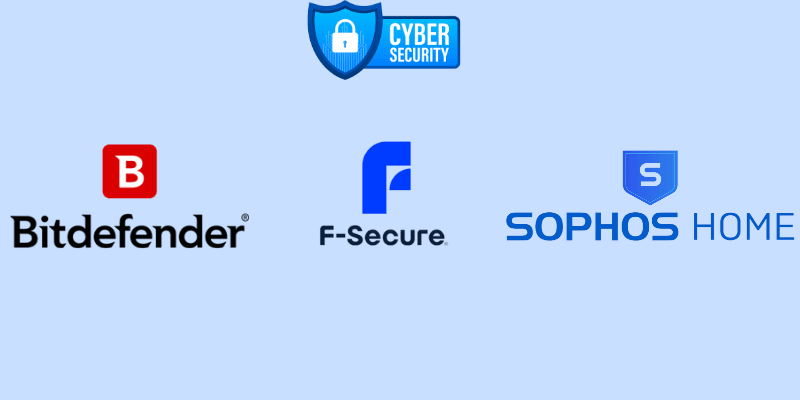
Click the link below to explore the comprehensive features and pricing guide for these three antivirus solutions.


